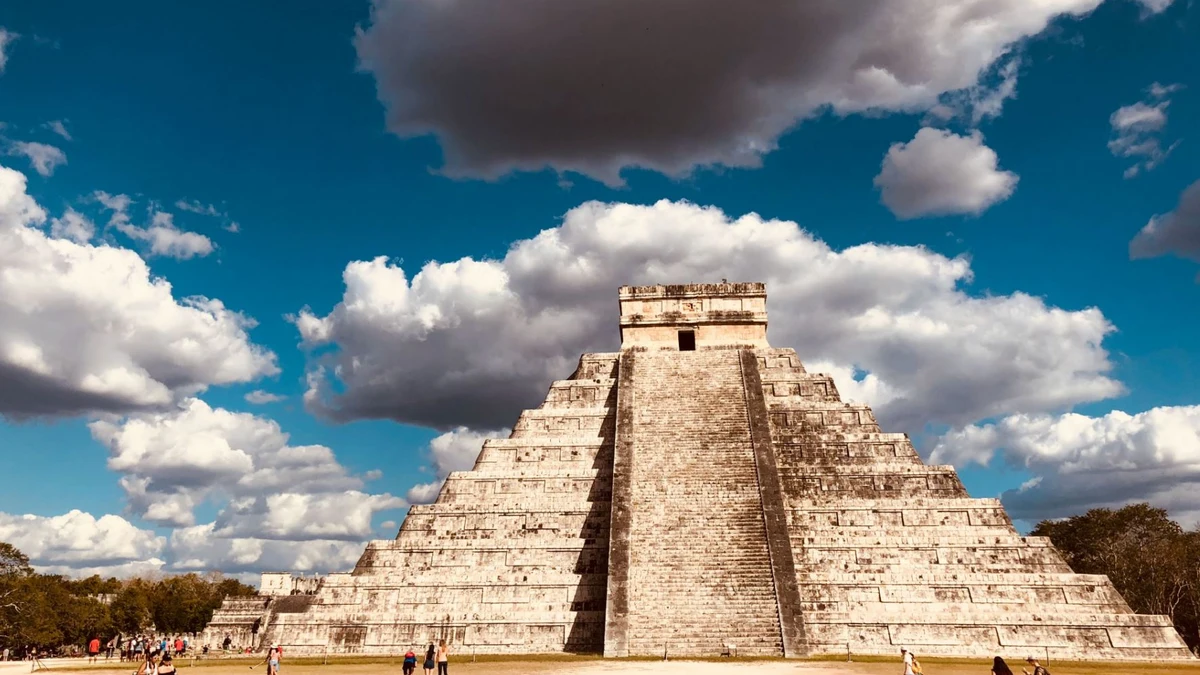
Chichen Itzalocated on the peninsula of Yucatan (Mexico), was one of the most important cities of the Mayan civilization. Currently, it is one of the most studied archaeological sites in Mesoamerica, mainly due to the vestiges of human sacrifices that were carried out in this place for centuries.
Although these rituals were an essential part of Mayan culture, they are still not well understood. Now, analysis of ancient DNA from the remains of 64 individuals sacrificeds in Chichén Itzá between 600 and 1100 AD has discovered that they were all little boys boysand that among them were two sets of twins.
The study has also evaluated the genetic impact of the epidemics on indigenous populations and has discovered that some genetic variants have been maintained to current populations.
The research – published this Wednesday in the journal Nature – is a collaboration between scientists from the Max Planck Institutes of Evolutionary Anthropology and Geoanthropology (both in Germany), the National School of Anthropology and History of Mexico, the National Institute of Anthropology and History of Mexico, and the universities of Yucatán and Harvard.
Ritual sacrifices
The city of Chichén Itzá, considered a UNESCO World Heritage Site, has architectural gems such as the Temple of Kukulcan -a four-sided pyramid nicknamed ‘El Castillo’- and a dozen locations for ‘ball games’, a Mayan practice closer to ritual than sport in which the winner was sacrificed as an offering to their deities.
The site is also famous for the ‘Sacred Cenote‘, a natural well that the Mayans considered doors to the underworld and where the remains of hundreds of individuals (mostly young women and children of both sexes) who had been sacrificed in sacred rituals were found.
Very close to this place, in 1967, a chultún -an underground water chamber- with the remains of more than a hundred young children sacrificed between 600 and 1100 AD
To better understand these rituals, the team analyzed ancient DNA from the bones of 64 Chultún children and found that they were all boys between 3 and 6 years old and that at least a quarter of them were related to at least one other child. of the group. Additionally, there were two sets of identical twins.
The team found that many children were first- or second-degree relatives with similar diets, suggesting that they had been raised in the same place and had been selected for a particular ritual. “But what completely changed the narrative was discovering that among these children there were identical twins because we saw that this sacrifice was not a simple offering, but rather it was a very particular tribute to the Hero Twins of Mayan mythology,” Max Planck researcher and co-author of the study, Rodrigo Barquera, tells EFE.
In Mayan culture, twins are special characters and their adventures are widely represented in art and sacred texts. The sacred book of Popol Vuh tells the story of the Hunapu twins, who were sacrificed by the gods after their defeat in a ball game. “The children buried in the chultún could have been sacrificed as a tribute to these deities and the duality of the Warrior Twins,” because for the Mayans, “being chosen for these sacrifices was one of the highest honors they could aspire to,” he highlights. the Max Planck immunogeneticist.
And although it is not possible to know how they died, “we know how they were not sacrificed, because they did not have fractures or cut marks on their bones” as would be the case with individuals sacrificed as an offering to ask things from their deities or like warriors, who are Their hearts were removed or they were decapitated.
Epidemics and genetic evolution
Genetic analysis has also allowed the team to analyze the impact of epidemics that the Spanish and the black slaves brought from Africa transmitted to the indigenous populations in colonial times.
During the 16th century in Mexico, wars, famines and epidemics reduced the local population by up to 90 percent, especially in specific episodes such as the cocoliztli epidemic of 1545, caused by the salmonella pathogen.
The team compared the genome of individuals from Chichén Itzá with those of the local Mayan community of Tixcacaltuyub and found that there has been great genetic continuity in the region.
The analysis also found adaptations important related to the diet and the lifestyle, but also with infectious diseases, particularly Salmonella enterica, a specific variety that did not exist in America before the arrival of Europeans to the continent and that increased the frequency of resistant gene variants in the genome of local populations and that have been conserved until now.
Source: Lasexta
Bruce is a talented author and journalist with a passion for entertainment . He currently works as a writer at the 247 News Agency, where he has established himself as a respected voice in the industry.












